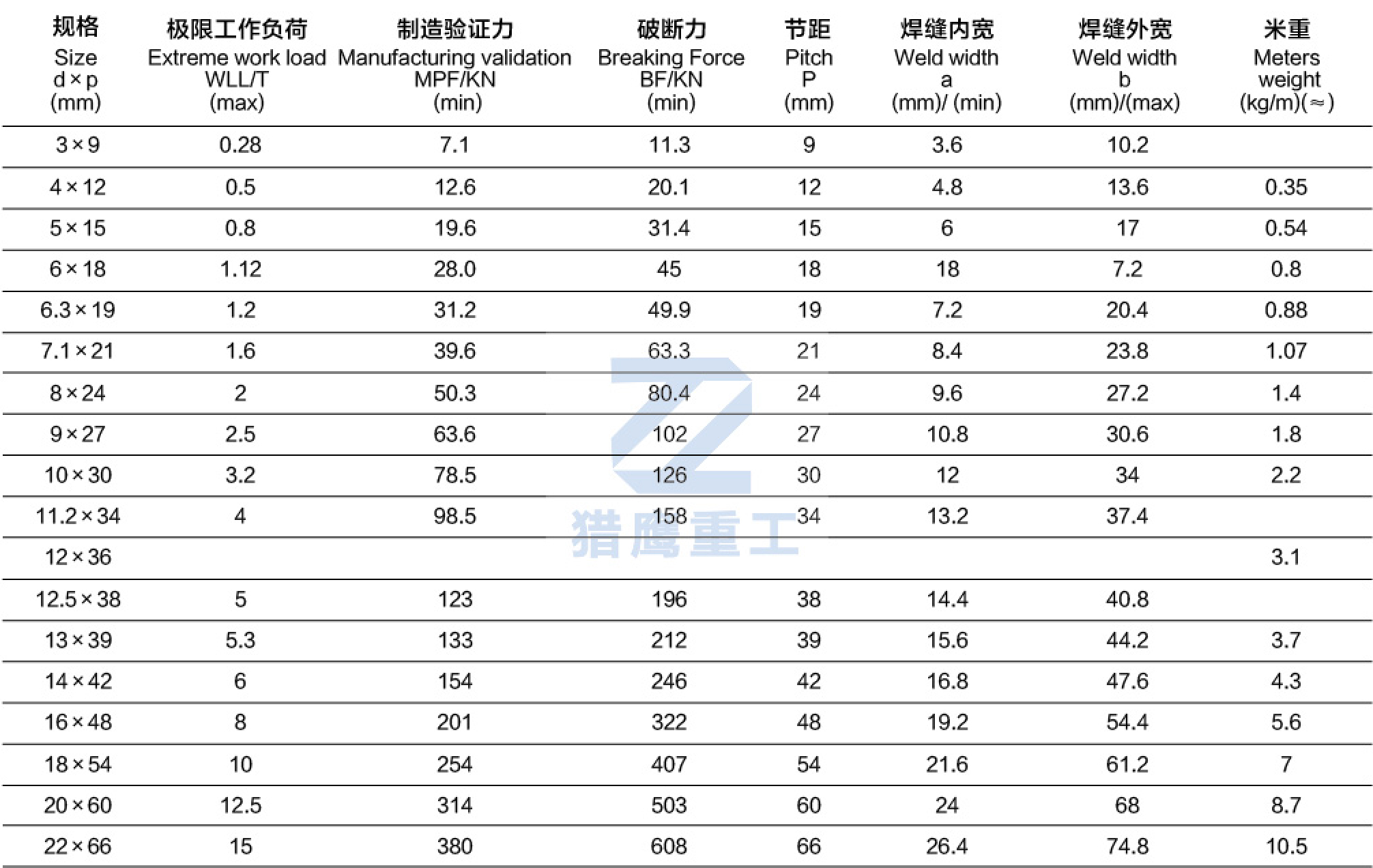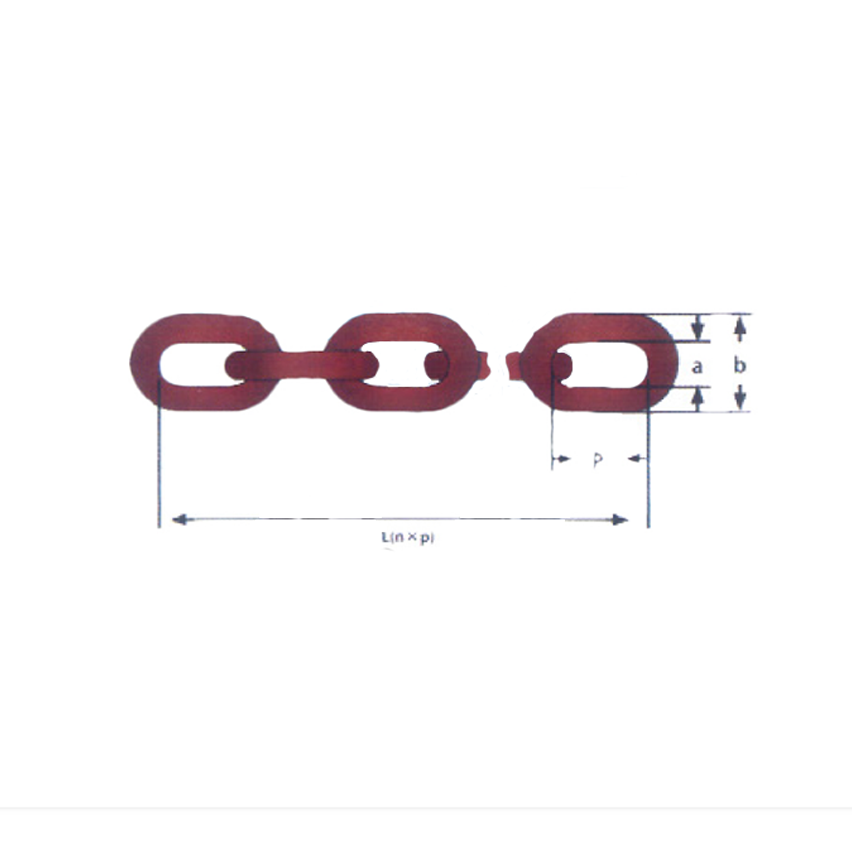 Chain scrapping standards (reference)
Chain scrapping standards (reference)
1 The lifting chain is counted from the plane where the main ring does not bend. When the main ring twists more than 10 degrees, it should be scrapped.
2 When any part of the lifting chain hoisting chain is cracked, bent or twisted, or stuck or stiff and hysteresis cannot be ruled out.
3 When the permanent elongation of the lifting chain or single ring exceeds 5% of the original length.
4 When the allowable wear value of the lifting chain exceeds 10% of the diameter of the bar material of the ring chain or the thickness of the auxiliary equipment.
Chain maintenance and maintenance (reference)
1 There should be no skew and swing when the sprocket is installed on the shaft. In the same transmission assembly, the end faces of the two lifting chain sprockets should be in the same plane. When the center distance of the sprocket is below 0.5 meters, the allowable deviation is 1 mm; when the center of the sprocket is above 0.5 meters, the allowable deviation is 2 mm . But there must be no friction on the side of the sprocket teeth. If the two wheels are offset too much, it is easy to take off the chain and accelerate wear. When replacing the sprocket, care must be taken to check and adjust the offset.
2 The tightness of the lifting chain should be appropriate, too tight to increase power consumption, the bearing is easy to wear; too loose chain is easy to jump and off the chain. The tightness of the lifting chain is: lifting or pressing down from the middle of the lifting chain, the center distance between the two sprockets is about 2% -3%.
3 The new lifting chain is too long or elongated after use, it is difficult to adjust, the chain link can be removed according to the situation, but it must be an even number. The chain link should pass through the back of the chain, the locking piece should be inserted outside, and the opening of the locking piece should be in the opposite direction of rotation.
4 After the sprocket wears seriously, the new sprocket and new lifting chain should be replaced at the same time to ensure good meshing. New lifting chains or new sprockets cannot be replaced separately. Otherwise, it will cause the problem of poor meshing and accelerate the wear of the new lifting chain or new sprocket. After the sprocket tooth surface wears to a certain degree, it should be turned over in time to extend the use time.
5 During the work, remember to add lubricating oil in time. The lubricant must enter the matching gap between the roller and the inner sleeve in order to reduce wear.
European / American / Japanese and international



 Chain scrapping standards (reference)
Chain scrapping standards (reference)